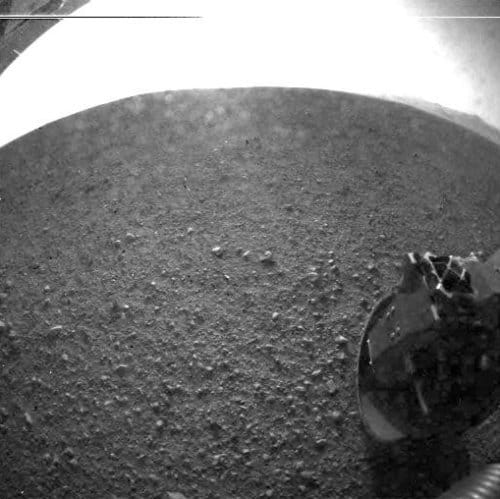
An early view of Mars from Curiosity. (Courtesy: NASA/JPL-Caltech)
By Hamish Johnston
It cost about one billion dollars and took hundreds of scientists and engineers more than eight years to build – and earlier today NASA’s Curiosity rover landed on Mars and is now sending back images.
The above photograph is one of first sent back by Curiosity. It was taken through a wide-angle lens on the left “eye” of a stereo pair of “hazard-avoidance” cameras on the rover. The object on the right of the image is one of the rover’s wheels.
The image is in black and white and is taken at a relatively low resolution. Larger colour images from higher-resolution cameras should be beamed back to Earth later this week when Curiosity’s mast is deployed.
Because it is five times heavier than NASA’s previous Martian rovers, Curiosity was winched down to the surface of the planet by a retro-rocket-firing “sky crane”.
“Ambitious, audacious and unconventional” is how one NASA scientist described the landing.
Curiosity landed on target in a huge crater, where it will look for evidence that the local area has – or ever had – conditions that could support life. The rover will be able to travel up to 200 m per day and the mission is expected to last one Martian year or 687 Earth days.
During that time it will use a suite of scientific instruments to study the Martian soil and atmosphere. Curiosity’s alpha-particle X-ray spectrometer was built by a team led by the physicist Ralf Gellert of the University of Guelph in Canada – my alma mater. Guelph physicists have a long history of using X-ray spectroscopy to study everything from precious works of art to Martian rocks and it was learning about this work many years ago that first got me interested in the practical applications of physics.



